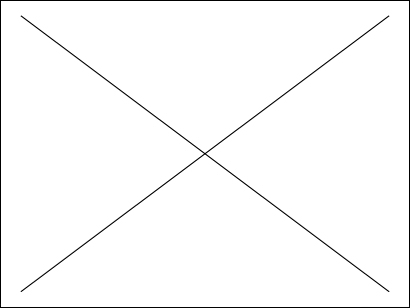Livre - Handbook of christianity in China
260 STA
Description
Livre
Brill
Standaert Nicolas
Presentation materielle : 1 vol. (XXVII-964 p.)
Dimensions : 25 cm
A true reference guide to the reception of Christianity in pre-1800 China, this handbook comprehensively presents to the reader with current knowledge on the subject, and guides him to the main Chinese and Western sources, bibliographies and archives. Both the systematic part and analytical articles answer questions such as: Who were the actors? Where were Christian communities located? What were the discussions? The scope is broad and includes such wide-ranging of topics as theology, philosophy, astronomy, mathematics, medicine, cannon, botany, art, music, etc. Nicolas Standaert, Ph.D. (1984) in Chinese Studies, University of Leiden, Lic.S. Theo. (1994) Fujen University, is Professor of Chinese Studies at the Catholic University Leuven. He has published extensively on Sino-Western cultural exchange in the seventeenth century.
Introduction, ix List of contributors, xv List of abbreviations, xvii TANG, p. 1 1. SOURCES, p. 2 1.1. Chinese written sources, p. 2 1.2. Syriac and Arab sources, p. 9 1.3. Archaeological sources, p. 10 1.4. Western and Chinese secoundary sources, p. 16 2. ACTORS, p. 18 2.1. Missionaries and their background, p. 18 2.2. Chinese Nestorians: question of identification, p. 23 3. SCENE, p. 25 4. THEMES, p. 30 4.1. Relations with court, p. 30 4.2. Doctrinal issues, p. 33 YUAN, p. 43 1. SOURCES, p. 43 1.1. Chinese sources, p. 43 1.2. Western sources, p. 46 1.3. Archaeological cources, p. 52 1.4. Secondary sources, p. 61 2. ACTORS, p. 63 2.1. Nestorian Christians, p. 63 2.2. Roman Catholics, p. 68 2.3. Armenian, Byzantine and Jacobite Christians, p. 79 3. SCENE, p. 80 3.1. Nestorian settlements, p. 80 3.2. Roman. Catholic settlements, p. 82 4. THEME, p. 84 4.1. Nestorian church organisation and missionary activities, p. 84 4.2. The Franciscan mission in Yuan China, p. 87 4.3. The Chinese reception, p. 90 4.4. The process of sinicisation, p. 94 4.5. The second decline of Christianity in China, p. 97 LATE MING – MID QING, p. 113 1. SOURCES, p. 113 1.1. Chinese primary sources, p. 113 1.1.1. Annalistic sources, p. 114 1.1.2. Official histories, p. 117 1.1.3. Archival sources, p. 121 1.1.4. Published collections of edicts and memorials, p. 131 1.1.5. Local histories, p. 135 1.1.6. Private sources, p. 138 1.1.7. Bibliographies of Chinese primary sources, p. 140 1.1.8. Libraries with important collections, p. 148 1.2. Western primary sources, p. 161 1.2.1. Typological survey, p. 161 1.2.2. Bibliographies of western primary sources, p. 200 1.2.3. Topographical survey, p. 205 1.3. Secondary sources and reference works, p. 238 1.3.1. Bibliographies, p. 238 1.3.2. Biographies, p. 246 1.3.3. Names of places, p. 257 1.3.4. Dates and the eccliesiastical year, p. 259 1.3.5. Western transcriptions of Chinese, p. 260 2. ACTORS, p. 286 2.1. Missionaries, p. 286 2.1.1. General characteristics, p. 286 2.1.2. Jesuits, p. 309 2.1.3. Dominicans, p. 322 2.1.4. Franciscans, p. 328 2.1.5. Augustinians, p. 339 2.1.6. Missions Étrangères de Paris, p. 344 2.1.7. Lazarists, p. 349 2.1.8. Other missionaries sent by Propaganda Fide, p. 353 2.2. Legations and travellers, p. 355 2.3. Russian. Orthodox Church, p. 367 2.4. Dutch. Protestant Mission in Taiwan, p. 376 2.5. Chinese. Christians, p. 380 2.5.1. General characteristics, p. 380 2.5.2. Well-known individuals, p. 404 2.5.3. Court-converts, p. 438 2.5.4. Manchu Christians and the Sunu family, p. 444 2.5.5. Chinese. Christians going abroad, p. 449 2.5.6. Social organisation of the Church, p. 456 2.6. Elites, p. 474 2.6.1. Sympathising literati and officials, p. 475 2.6.2. Emperors, p. 492 2.6.3. Opponents, p. 503 3. SCENES, p. 534 3.1. The creation of. Chrstian communities, p. 543 3.2. Ecclesiastical administration, p. 576 3.3. Church buidling, cemeteries and tombstones, p. 580 4. THEMES, p. 592 4.1. Theology and ethics, p. 592 4.1.1. Theological background, p. 592 4.1.2. Apostolate through books, p. 600 4.1.3. Key theological issues, p. 632 4.1.4. Moral ideas and practices, p. 653 4.1.5. Figurism, p. 668 4.1.6. Rites. Controversy, p. 680 4.2. Science and techology, p. 689 4.2.1. General reception, p. 689 4.2.2. Astronomy, p. 711 4.2.3. Mathematics, p. 738 4.2.4. Cartoraphy, p. 752 4.2.5. Cannon, p. 771 4.2.6. Technology, p. 778 4.2.7. Medicine, p. 786 4.2.8. Botany, p. 803 4.3. Arts, crafts and language, p. 809 4.3.1. Prints and painting in the seventeenth century, p. 809 4.3.2. Artistic issues in the eighteeth century, p. 823 4.3.3. Clocks, p. 840 4.3.4. Music, p. 851 4.3.5. Linguistics, p. 861 4.4. Cultural transmission to Europe, p. 879 Contributions arranged by authors, p. 907 Detailed table of contents, p. 910 Index, p. 921 Persons (Tang, Yuan, Ming/Qing), p. 921 Chinese and Manchu Books, p. 936 Subjects, p. 942 Authors (Modern), p. 952
Notes bibliogr. - Index. - Bibliogr. en fin de chapitre.
